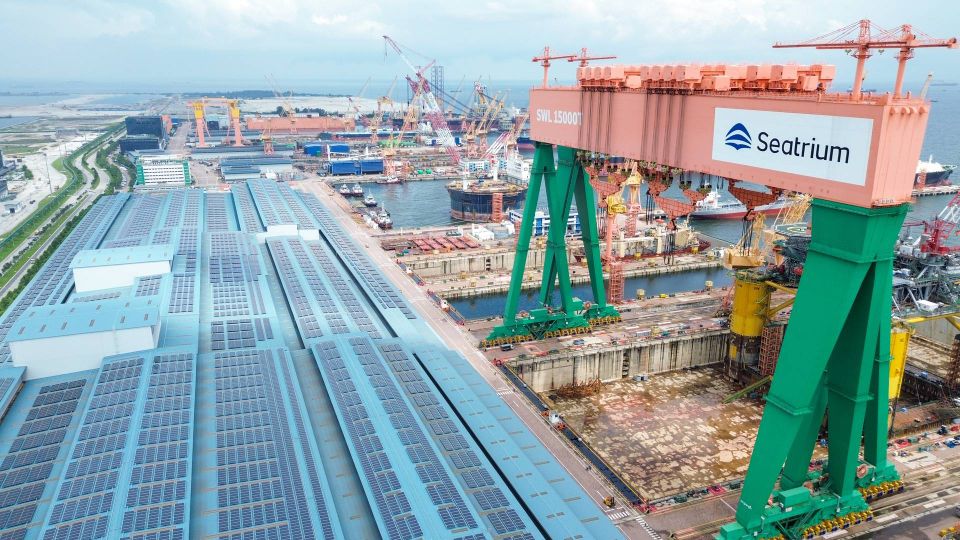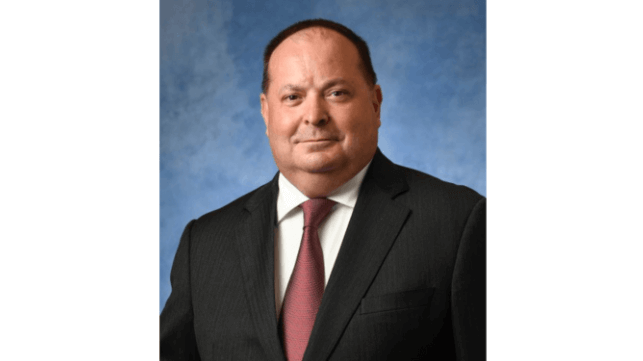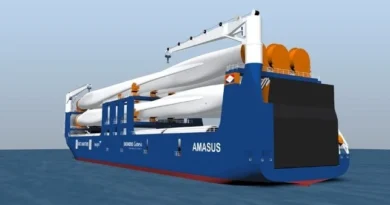Seatrium expects softly growing retrofit market even with new IMO agreement
SINGAPORE
Seatrium’s HQ and its main docks are located at the remote end of the Tuas peninsula, far away from downtown Singapore. Just from the highway close to the border checkpoints towards Malaysia, it takes the taxi driver 20 minutes to reach the shipyard.
In fact, it is the first time ever the Comfort Degro taxi driver is there.
With a combined site area spanning over 1.5 million square metres with yards and docks, newbuilding and repairs facilities, ships and hulls stacked on both side of Tuas South Boulevard, the ride gives a fair impression of the vast magnitude and capacity.
In 2023, repairs and upgrades comprised around 13% of the total revenue of Seatrium on group level including its facilities in countries like Philippines, Brazil, China and the US.
If you ask Alvin Gan, executive vice president of the repairs and upgrades business at Seatrium, the figure will grow steadily driven by higher value jobs, the company’s primary aim.
”Better to maintain the steady level and have pleased customers,” as he argues.
”We will try to maintain the quality and customer experience of our work for repairs and upgrades, not to stretch our resource too thinly. There is no point for us wanting to take more than we can chew in a market like this,” he tells ShippingWatch during an interview.
”We are not the cheapest in the value chain, in the service that we provide. But we are focused on the services we provide and selective on who we want to partner with. And we have a pool of 22 best in class partners that we have exclusive relationships with from niche segments such as LNG, cruise and the navy,” he continues.
Cautious prediction
A lot of stakeholders in the industry, owners and suppliers, believe retrofit of the existing fleet is set to become the absolute main driver going forward. Above all, if IMO delivers on its ambitions in April and adopts the long-term decarbonization plans drafted in 2023.
Alvin Gan is, however, cautious and sees no immediate sky-rocketing order inflow even with a global regulation framework in place in the spring. It may not happen until a couple of years down the road.

And most probably not until towards 2030, the market is mature in most aspects.
”Towards the end of the decade, it will take off, because there are a lot of prototyping at the moment, and when they see there is a positive result in terms of the savings and in terms of the abatement of the emissions systems, so that will naturally, and by then, hopefully, the infrastructures are ready, and the investment into technologies is widely available.”
Retrofitted 1,000 vessels
To date, Seatrium has repaired, fixed and retrofitted around 1,000 vessels, and although you can spot a couple of available slots at the yard, activities are rather hectic, Gan says.
The views from the balcony in front of the board room gives a good understanding of the variety of assignments and works in progress, just as it somehow mirrors the state of the shipping industry at the entry of 2025.
In one of the docks, repairs are being conducted on the product tanker Hafnia Nile after the collision in July last year with Ceres 1, sparking a fire on Hafnia’s vessel.
In another, upgrades are conducted on a mega white cruise, a segment of vessels which has grown notably in size at Seatrium after Covid., sparked by spiking tourism. On the other side of the building a huge VLCC is being converted to a FPSO to saturate the still high demand for gas globally.
And last weekend a ship arrived at the yard to have a dual-fuel engine installed retrofitted to be able to cut emissions sailing on LNG in the future. Not to forget the carbon capture installation on one of Norwegian Solvang’s offshore vessels, set to capture and store up to 70% of the carbon dioxide emitted.
Installed over 130 scrubbers
Clearly, quite a stake of the order inflow has to do with the current and future decarbonization of shipping, and more specifically how the industry can cut emissions, or in the case of the Solvang ship, capture emissions and later offload them onshore.
Retrofitting of vessels as part of the energy transition took off on the back of IMO’s first long-term decarbonization strategy from 2018 and in earnest when the sulfur rules entered into force in 2020. . Including containers and bulkers, Seatrium has delivered more than 500 – what the company defines as – green retrofit projects.
Including containers and bulkers, Seatrium installed over 130 units of scrubbers to clean sulfur from exhaust gases.
Seatrium aims to improve its financials substantially in the coming years and to present an operating result in 2028 of at least USD 740m (SGD 1 bn), which is four times better than last year.
Singapore’s Seatrium aims to quadruple results in 2028
Results for the first six months last year showed net profits of SGD 36m (USD 26m) compared with a deficit of SDG 264m (USD 188m) in the first half of 2023.
The offshore & marine engineering group was formed from the merger of the two offshore and marine companies in February 2023: Sembcorp Marine and Keppel Offshore & Marine. First half of 2024 it presented its first profits. And it aims to continue the positive trajectory with the support of its majority owner Temasek, the nation’s sovereign wealth fund.




